How to Incorporate Biophilic Interior Design In Your Home
In this post, we look at the biophilic design concept and offer tips for incorporating this design into your home.
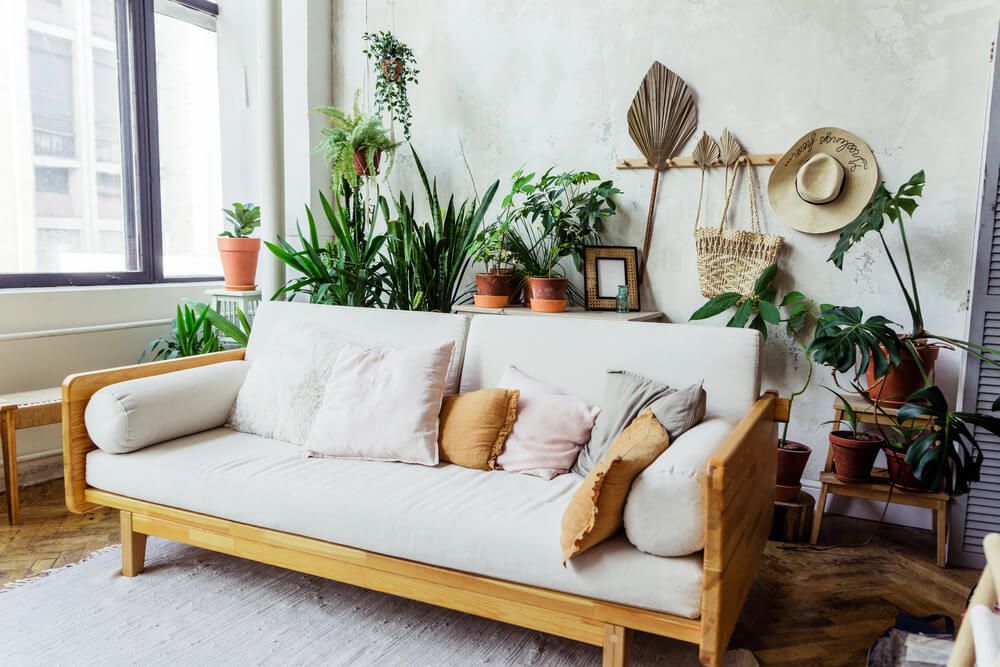
Incorporating elements of nature into our lives has gained a lot of traction in home and office design. Building on nature's positive impact on our health and well-being, biophilic design incorporates natural elements that can increase productivity and creativity by reducing stress levels.
In this post, we examine the biophilic interior design concepts and offer tips for incorporating them into your home. It's easier than you think.
KEY TAKEAWAYS
- Connect with nature: Biophilic design integrates natural elements like plants, sunlight, and organic materials to create a calming, eco-friendly environment.
- Use natural materials: Incorporating wood, stone, and natural fibers adds texture and warmth, enhancing the indoor-outdoor connection.
- Maximize natural light: Large windows, glass doors, and skylights allow sunlight to flow in, improving mood and promoting well-being.
- Add indoor plants: Houseplants not only purify the air but also provide visual interest and a sense of tranquility in any space.
- Water and earth elements: Including features like water fountains or earthy color palettes creates a harmonious, nature-inspired aesthetic.
What is biophilic design in interior design?
Biophilic design connects people with nature by incorporating nature's elements into a design. The goal is to create a space that feels more like a natural setting and less like a traditional indoor environment. You can accomplish this in several ways, such as using materials that mimic nature, incorporating plants and greenery into the design, and using natural light wherever possible.
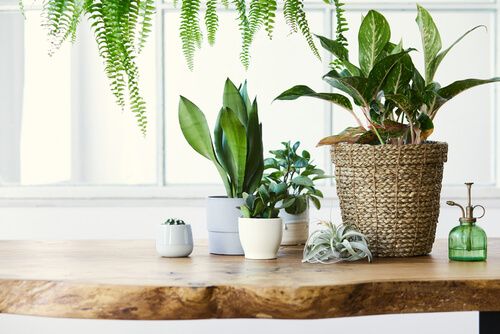
Biophilic interior design has been shown to have many benefits, including reducing stress levels, improving cognitive function, and promoting creativity. It provides a much-needed opportunity to reconnect with the natural world in a world increasingly disconnected from nature.
How to incorporate biophilic design into your home
The concept of biophilic interior design is all about connecting with nature. You can do that in several ways, including bringing nature inside your home and adding natural elements to your outdoor areas.
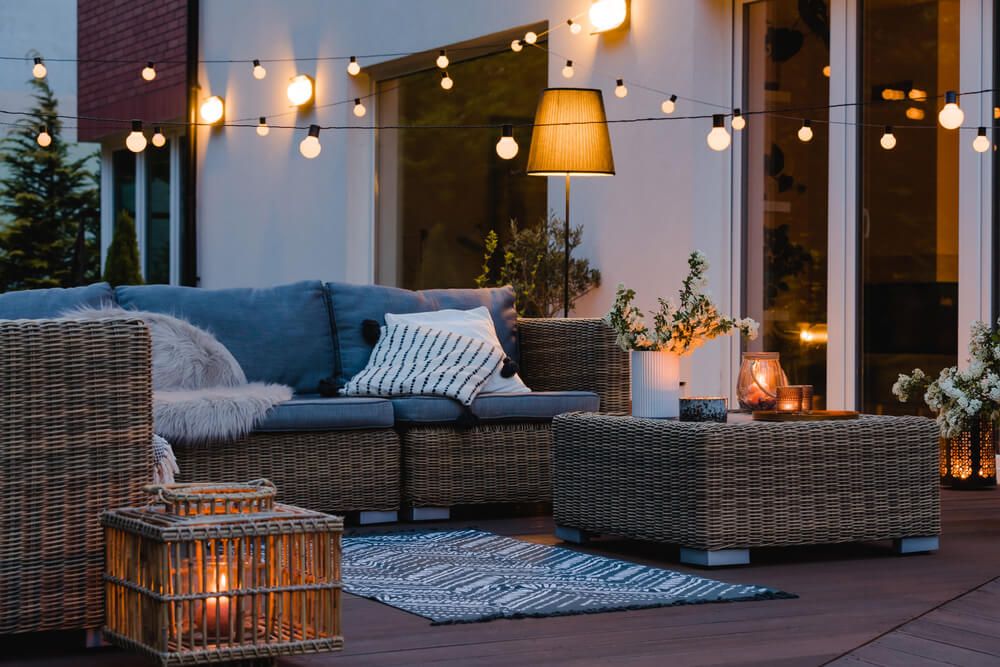
Add plants and lots of them
Adding plants is one of the easiest ways to incorporate nature into your home and one of the main aspects of biophilic interior design. Flowers, herbs and plants look great and add tranquility and freshness to your home. They are also great for purifying the air and reducing stress by creating a more relaxing environment.
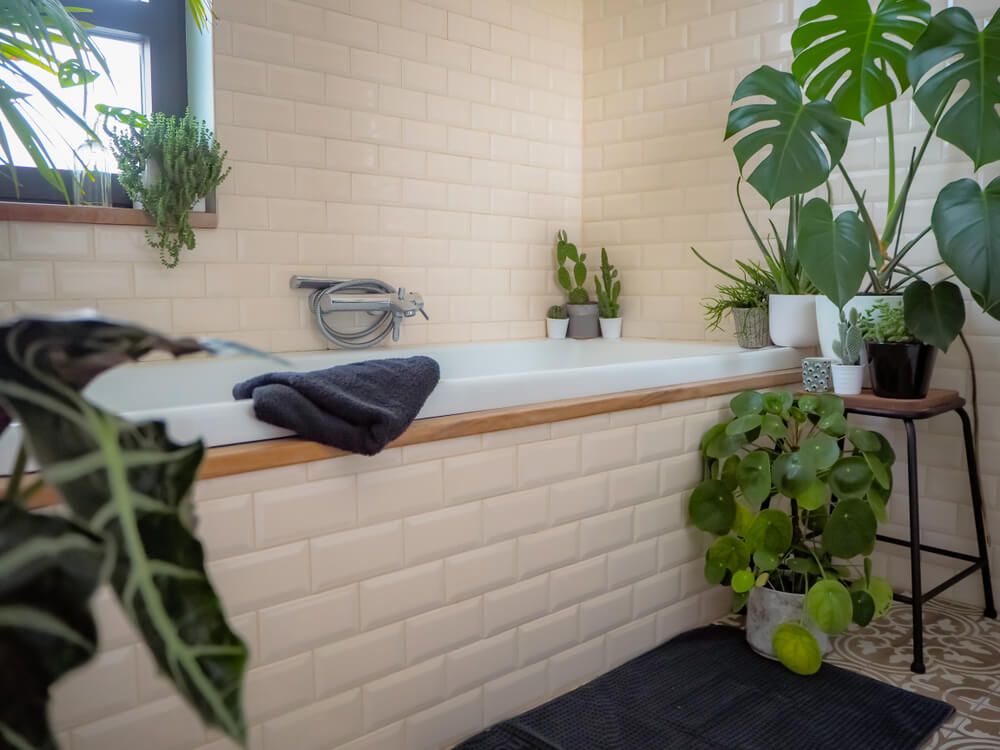
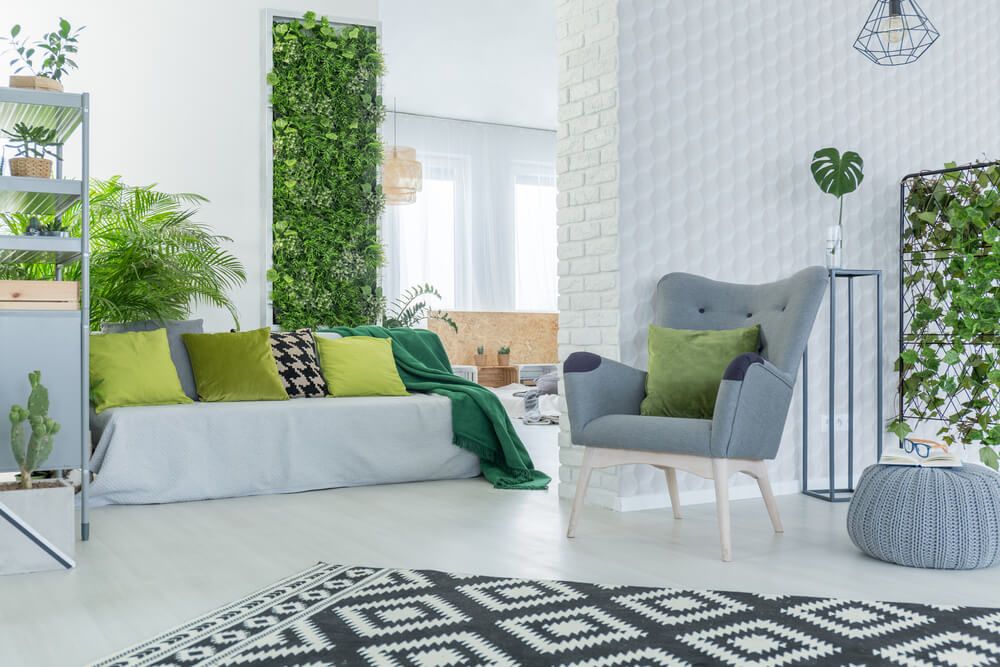
Add lots of plants to your home | Shutterstock
You can add plants to every room in your home, including the bathroom. Select plants that do well in humid environments and don’t need a lot of maintenance. You can also create vertical green walls, terrariums and herb gardens to add variety and interest to your decor. If you're not particularly green-thumbed, opt for low-maintenance varieties like succulents or snake plants.
Let in the light
One of the best ways to feel connected to nature is by maximizing natural light in your home. It’s one of the simplest and most effective ways to bring a biophilic touch to your interiors. Open the curtains and ensure your windows are not blocked by furniture and large items.
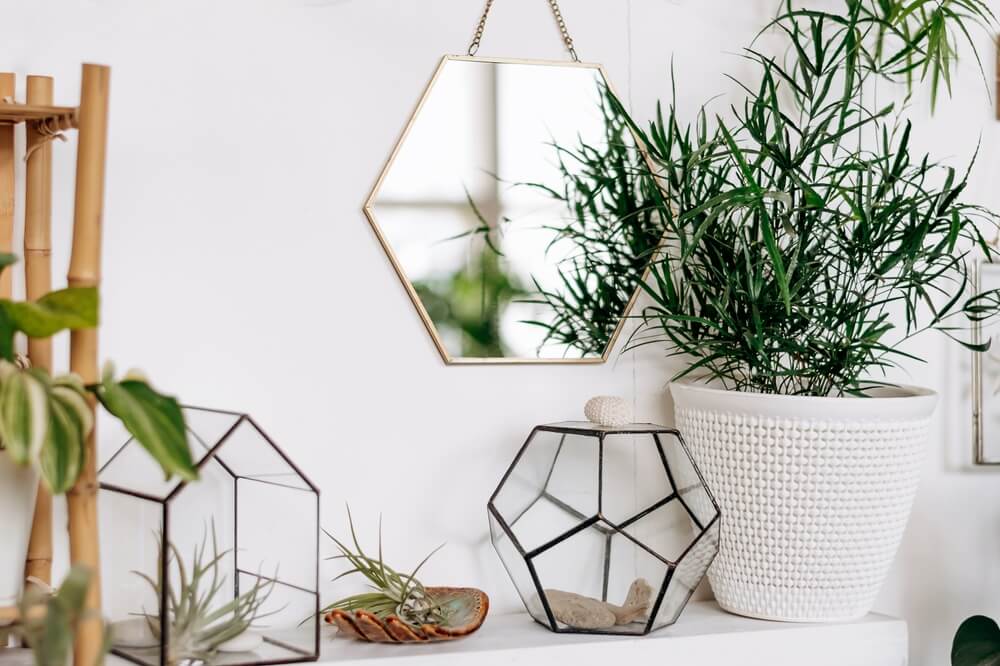
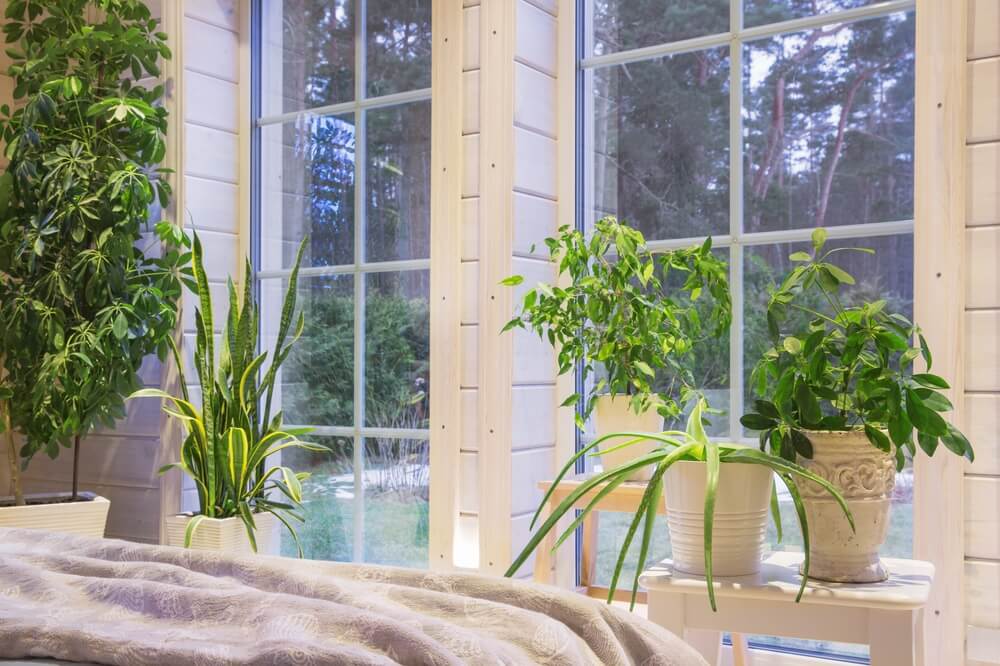
Let in lots of natural light | Shutterstock
Open your windows and let in the fresh air. Not only will it make you feel better, but it will also freshen up your home. In addition to windows, you can consider adding skylights to bring more natural light inside. If you have a limited number of windows, consider adding mirrors and reflective materials that reflect the light and brighten your home.

Use natural elements
Biophilic interior design and connecting with nature isn’t just about plants and light. By incorporating natural materials into your home, you can still create a connection with nature. Think of materials like wood, stone, granite and bamboo in your finishes and furniture or seashells, sticks and rocks as decorations.


Natural materials are key in biophilic interior design | Shutterstock
Natural fabrics and colors also help people connect with nature. Woven baskets, throws, carpets and drapes made from raw materials are great ways to feel connected to nature even if you don’t have a lot of space.
Incorporate water features
Much like the concept of feng shui, adding water to your home interior is another concept of biophilic interior design. Simply hearing or watching the water move is a great way to destress and relax. You can easily incorporate water into your home by adding a small aquarium, water wall or table fountain.
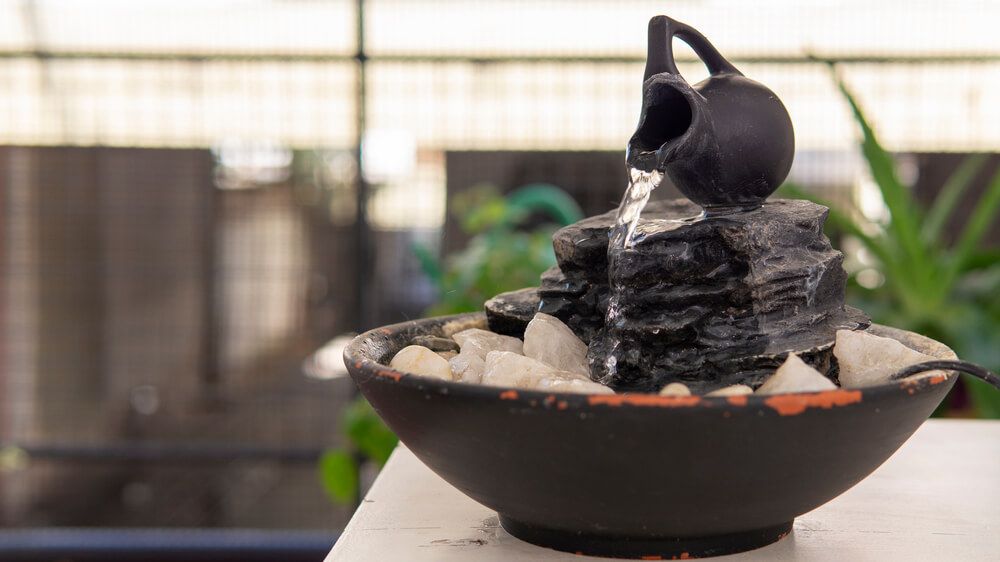

Water is an important element when connecting with nature | Shutterstock
If you don’t have a lot of space, consider adding mirrors, images of water, or even listening to falling rain or waterfall. The idea is to harness nature’s sounds and channel them into your home.
Create an outdoor space
Spending time outdoors has a positive impact on our health. If you have a garden or outdoor space, you can create a comfortable and relaxing area to unwind and entertain. But you don’t need a garden to create an enjoyable outdoor space.
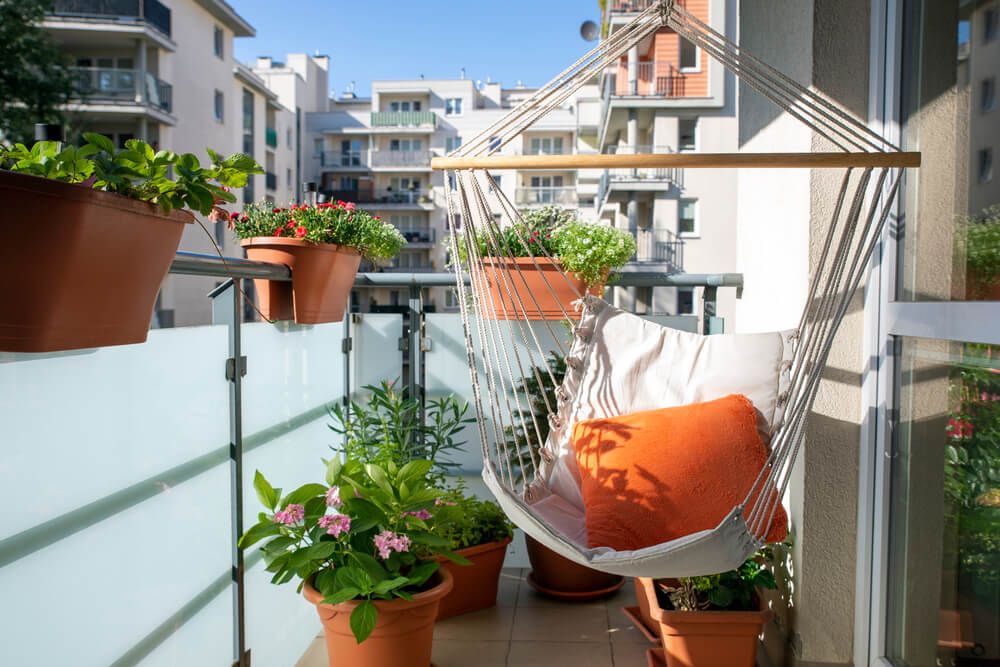
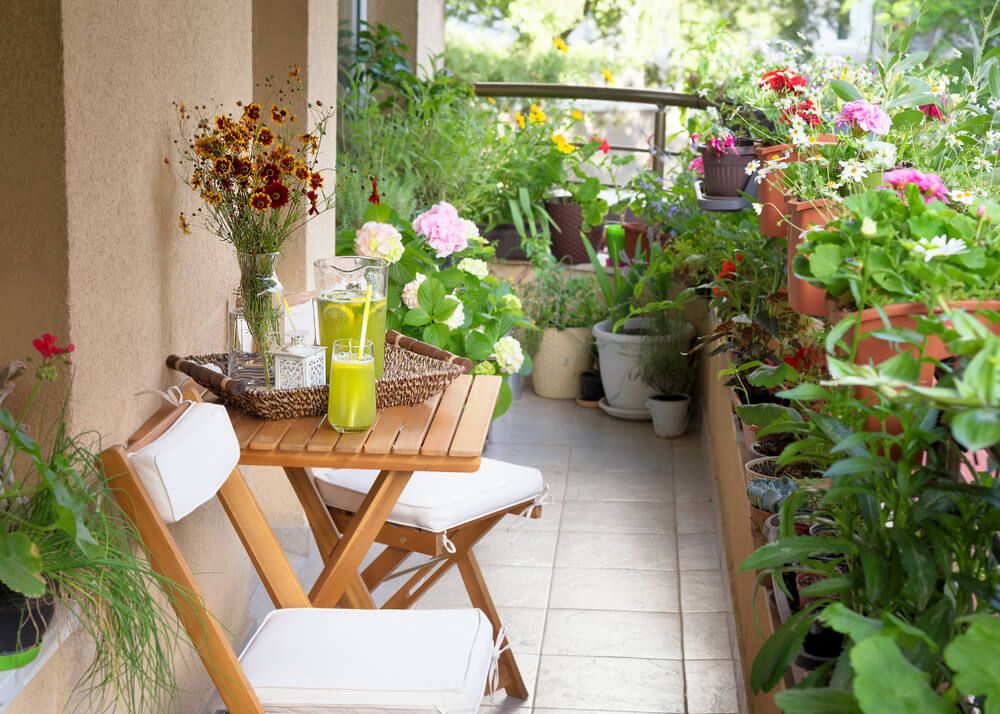
Create outdoor spaces to relax and unwind | Shutterstock
Creating a comfortable space allows you to enjoy your outdoor spaces and improve your well-being. Balconies, patios and courtyards are also great places to enjoy nature. Adding comfortable furniture and plants can automatically enhance your space and create a connection with nature.
By incorporating biophilic interior design into your home, you can enjoy all the benefits nature offers. Using natural materials, bringing in plants and connecting to the outdoors creates a healthy and relaxing home where you can unwind and take care of your well-being.
FAQ
What is biophilic interior design?
Biophilic interior design focuses on incorporating elements of nature into indoor spaces to create a harmonious and calming environment. This includes using natural materials, maximizing sunlight, and adding plants or water features.
What are the benefits of biophilic design?
Biophilic design has numerous benefits, including improving air quality, reducing stress, enhancing mood, and boosting overall well-being. It can also increase productivity and create a more inviting and comfortable living space.
How can I implement biophilic design in a small apartment?
Even in small spaces, you can incorporate biophilic interior design elements. These include houseplants, natural materials (e.g., wood furniture or stone accents), and sheer curtains to maximize natural light. Vertical gardens or wall-mounted planters are also great for small areas.
Do I need a lot of plants for a biophilic design?
While plants are a key element, they are not the only feature of biophilic design. You can also integrate natural textures, earthy color palettes, water features, and ample natural light to achieve a nature-inspired atmosphere without abundant greenery.
Are there budget-friendly ways to incorporate biophilic design?
Yes, there are several cost-effective ways to bring nature indoors, such as using second-hand wood furniture, DIY plant shelves, or adding small potted plants like succulents. You can also focus on maximizing natural light and using eco-friendly, affordable materials like jute or bamboo.
